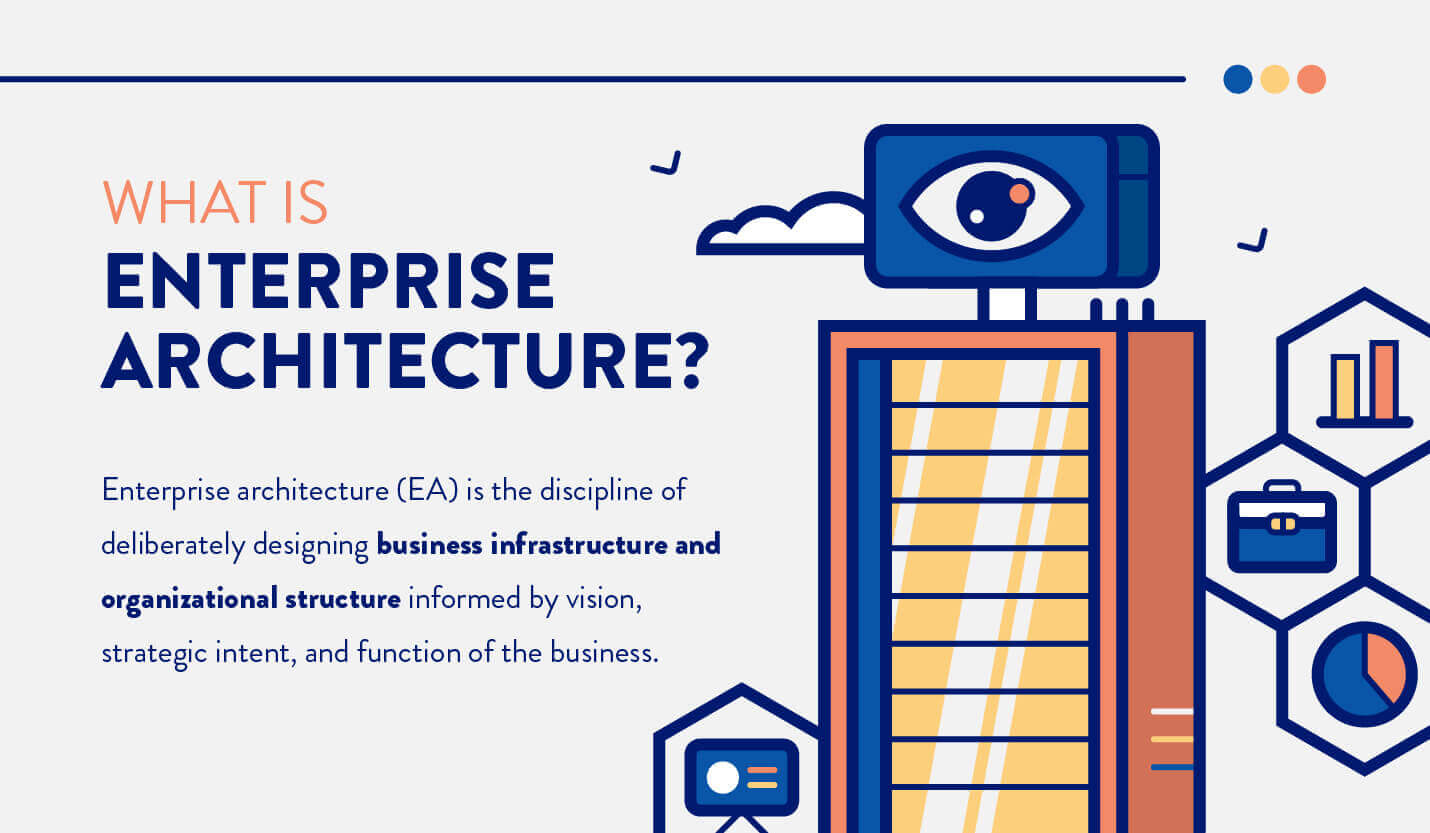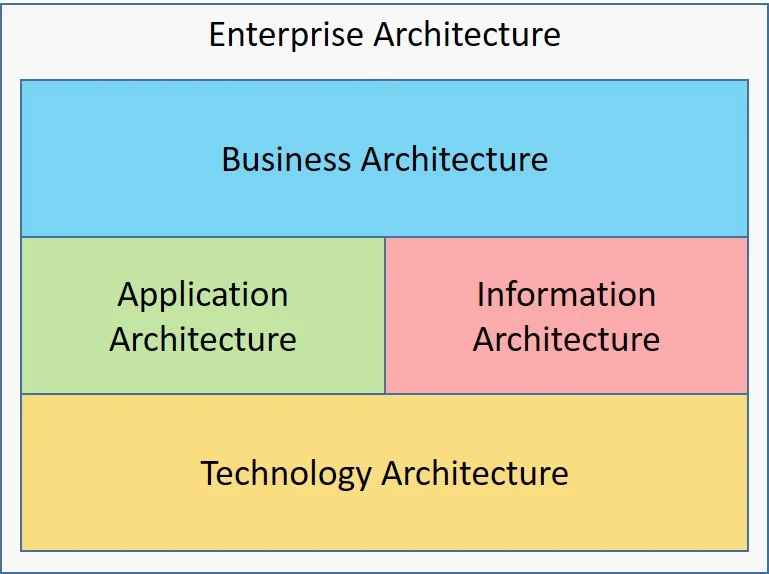Introduction
In today's rapidly evolving business landscape, organizations must constantly adapt and improve their processes to stay competitive. One approach to achieving this is through business process reengineering (BPR), a strategic initiative aimed at fundamentally redesigning and improving an organization's core processes. In this article, we will explore the role of enterprise architecture in supporting and enabling successful business process reengineering initiatives.
The Value of Enterprise Architecture in Business Process Reengineering
Why is Enterprise Architecture Important?
Enterprise architecture (EA) provides a holistic view of an organization's structure, processes, systems, and technology. It helps align business objectives with IT capabilities, enabling organizations to make informed decisions about optimizing their operations. By understanding the current state of the organization and envisioning the desired future state, EA acts as a bridge between strategy and execution.
How Does Enterprise Architecture Support Business Process Reengineering?
hereIdentifying areas for improvement: Enterprise architects analyze existing business processes to identify bottlenecks, inefficiencies, and opportunities for optimization. They collaborate with stakeholders to understand pain points and develop a clear vision for process improvement.
Defining target architectures: Through a systematic approach, enterprise architects define target architectures that align with the organization's strategic goals. These architectures serve as a blueprint for reengineering efforts by outlining the desired future state.
Enabling technology alignment: EA ensures that technology investments are aligned with the organization's overall objectives. By mapping IT capabilities to business processes, enterprise architects can identify gaps or redundancies in technology infrastructure and recommend solutions that support reengineering efforts.
Facilitating collaboration: Successful business process reengineering requires cross-functional collaboration. Enterprise architects act as facilitators, bringing together stakeholders from various departments to ensure alignment and coordination throughout the reengineering journey.
Managing change: EA helps manage change by addressing the impact of process reengineering on people, processes, and technology. Enterprise architects develop change management plans, including communication strategies and training programs, to ensure smooth transitions and adoption of new processes.
Enterprise Architecture Tools for Business Process Reengineering
The Role of Enterprise Architecture Tools
Enterprise architecture tools play a crucial role in supporting business process reengineering initiatives. These tools provide a structured approach to capturing, analyzing, and visualizing enterprise architecture information. They enable enterprise architects to model current and target architectures, assess the impact of proposed changes, and communicate complex concepts effectively.
Key Features of Enterprise Architecture Tools
Modeling capabilities: Enterprise architecture tools offer a range of modeling techniques, such as business process modeling notation (BPMN), entity-relationship diagrams (ERDs), and application dependency mapping. These capabilities help enterprise architects capture and represent complex relationships between business processes, systems, data, and stakeholders.
Impact analysis: By simulating proposed changes within the enterprise architecture models, these tools allow enterprise architects to assess the potential impacts on processes, systems, and resources. This helps identify risks and dependencies early in the reengineering process.
Collaboration features: Enterprise architecture tools provide collaboration features that facilitate stakeholder engagement and feedback. These features allow multiple users to contribute to the development of enterprise architecture artifacts, ensuring a comprehensive and inclusive approach to business process reengineering.
Integration capabilities: Many enterprise architecture tools integrate with other IT management systems, such as project portfolio management (PPM) or IT service management (ITSM) platforms. This integration enables seamless alignment between business process reengineering initiatives and other IT-related activities.
Popular Enterprise Architecture Solutions
ServiceNow Application Portfolio Management (APM) Tools: ServiceNow APM tools provide comprehensive capabilities for managing application portfolios within an organization. These tools help enterprise architects assess application health, align investments with strategic objectives, and rationalize the application landscape as part of business process reengineering efforts.
Sparx Systems Enterprise Architect: Sparx Systems Enterprise Architect is a powerful modeling tool that supports the entire enterprise architecture lifecycle. It enables enterprise architects to create, analyze, and communicate architectural models, making it an ideal choice for business process reengineering initiatives.

LeanIX: LeanIX is a cloud-based enterprise architecture tool that focuses on providing actionable insights for IT decision-makers. Its intuitive interface and extensive integration capabilities make it a popular choice for organizations embarking on business process reengineering projects.
Solution Architecture Management in Business Process Reengineering
What is Solution Architecture?
Solution architecture refers to the design and implementation of specific solutions within the context of an organization's overall enterprise architecture. It focuses on addressing specific business problems or opportunities by leveraging technology and aligning with the Great post to read broader architectural framework.
The Role of Solution Architects in Business Process Reengineering
Understanding business requirements: Solution architects collaborate with stakeholders to understand their specific requirements and translate them into technical solutions. In the context of business process reengineering, solution architects play a crucial role in identifying opportunities for automation or streamlining processes through technology interventions.
Designing scalable solutions: Solution architects design scalable and sustainable solutions that align with the organization's strategic goals. They consider factors such as performance, security, interoperability, and maintainability when developing architectural blueprints for reengineered processes.
Collaborating with enterprise architects: Solution architects work closely with enterprise architects to ensure alignment between the solution design and the broader enterprise architecture. They contribute to defining target architectures and provide valuable insights into the feasibility and impact of proposed changes.
Managing implementation: Solution architects oversee the implementation of their designs, working closely with development teams to ensure adherence to architectural guidelines and best practices. They also conduct regular reviews to assess the effectiveness of implemented solutions and make adjustments if necessary.
FAQs about Enterprise Architecture in Business Process Reengineering
1. What is the role of enterprise architecture in driving business process reengineering?
Enterprise architecture plays a critical role in driving business process reengineering by providing a structured approach to understanding, analyzing, and optimizing an organization's processes. It enables organizations to align their IT capabilities with Extra resources strategic goals and identify areas for improvement.
2. How can enterprise architecture tools support business process reengineering initiatives?
Enterprise architecture tools provide modeling capabilities, impact analysis features, collaboration tools, and integration capabilities that support business process reengineering initiatives. These tools help enterprise architects capture, analyze, and communicate enterprise architecture information effectively.
3. What are some popular enterprise architecture solutions for business process reengineering?
Popular enterprise architecture solutions for business process reengineering include ServiceNow Application Portfolio Management (APM) Tools, Sparx Systems Enterprise Architect, and LeanIX. These tools offer comprehensive capabilities for managing enterprise architecture and supporting reengineering efforts.
4. What is solution architecture management in the context of business process reengineering?
Solution architecture management involves designing and implementing specific solutions within the context of an organization's overall enterprise architecture. In the context of business process reengineering, solution architects play a crucial role in developing scalable and sustainable solutions that align with strategic goals.
5. How do solution architects contribute to business process reengineering initiatives?
Solution architects contribute to business process reengineering initiatives by understanding business requirements, designing scalable solutions, collaborating with enterprise architects, and overseeing the implementation of their designs. They ensure alignment between solution designs and the broader architectural framework.
6. How does enterprise architecture manage change during business process reengineering?
Enterprise architecture manages change during business process reengineering by addressing the impact on people, processes, and technology. It develops change management plans, communication strategies, and training programs to facilitate smooth transitions and adoption of new processes.
Conclusion
The role of enterprise architecture in business process reengineering cannot be overstated. It provides a holistic view of an organization's structure, processes, systems, and technology, enabling informed decision-making and alignment between strategy and execution. By leveraging enterprise architecture tools and incorporating solution architecture management, organizations can drive successful business process reengineering initiatives. With the right approach and The original source expertise, organizations can optimize their operations, enhance customer experiences, and achieve sustainable growth.
